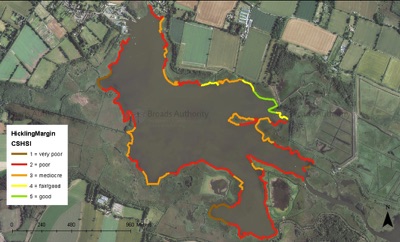

Planning and development (influenced by the Town and Country Planning Act 1990), places obligations upon developers operating under this legislation. We aim to reduce planning and development environmental burdens on all projects through prompt, effective and professional services to all aspects of the development process involving the environment, from small domestic planning applications to industry driven development. Within this scope, we also work with civil engineering companies to ensure compliance and advise on the most beneficially appropriate way forward, providing net benefit to wildlife whilst facilitating responsible development.
In order to protect species and sites of ecological value in the UK there are a number of legislative requirements to comply with, amongst these Wildlife and Countryside Act 1981 (amended), Natural Environment and Rural Communities Act 2006 and the conservation of Habitats and Species Regulations 2010. The Water Framework Directive (Directive 2000/60/EC) covers the aquatic environment.
The scale of survey required depends upon the legislative requirements relating to the size of development or the findings of any preliminary surveys. Larger developments are often subject to an Environmental Impact Assessment (EIA), whilst smaller ones are likely to require Phase 1 Habitat and extended Phase 1 Habitat surveys.

Environmental Impact Assessment
EIA assessment is covered under the Town and Country Planning (Environmental Impact Assessment) Regulations 2011, also applying to permitted development. Environmental Impact Assessment should not be considered as barrier to economic growth and will only apply to a small proportion of projects considered within the Town and Country Planning regime. Local planning authorities have a responsibility to consider the environmental implications of developments which are subject to planning control and which are likely to have significant effects on the environment. When required, they are limited in the scope of assessment to those aspects of the environment that are likely to be significantly affected by the proposed development.
Phase 1 Habitat Survey
Phase 1 Habitat surveys are regularly requested as part of the planning process. However, we also recognise that often a more detailed report is required. Where this is the case we regularly undertake Phase 1 Extended Habitat Surveys. Dependent upon the findings further species-specific surveys may be required. Indeed, in order to provide more cost effective service to our clients we often recommend starting with the Extended habitat Survey in the first instance, saving both time and money.
Extended Phase 1 Habitat Survey
The Extended Habitat Survey comprises of field-based ecological assessment of the site, complimented with a desk based study, which looks at biological and local records for the site and surrounding area. Output is via a habitat map based report, which provides assessment of the ecological value of the site and the risks of the proposed activities and how these might be avoided through changes to design, mitigation through a designed program for the species concerned or through to compensation based proposals. Throughout, we look at opportunities for enhancement, adding value to the project and the overall site.
When species listed within Wildlife and Countryside Act 1981 and the Conservation of Habitats and Species Regulations 2010 are indicated as present or regarded as highly likely to be within a proposed site, then Phase 2 Protected Species Surveys will be required.
Phase 2 Protected Species Surveys
Our staff and associates are fully trained and licensed to carry out Protected Species Surveys
Many of our staff hold chartered status and all our surveys are carried out in accordance with JNCC guidelines